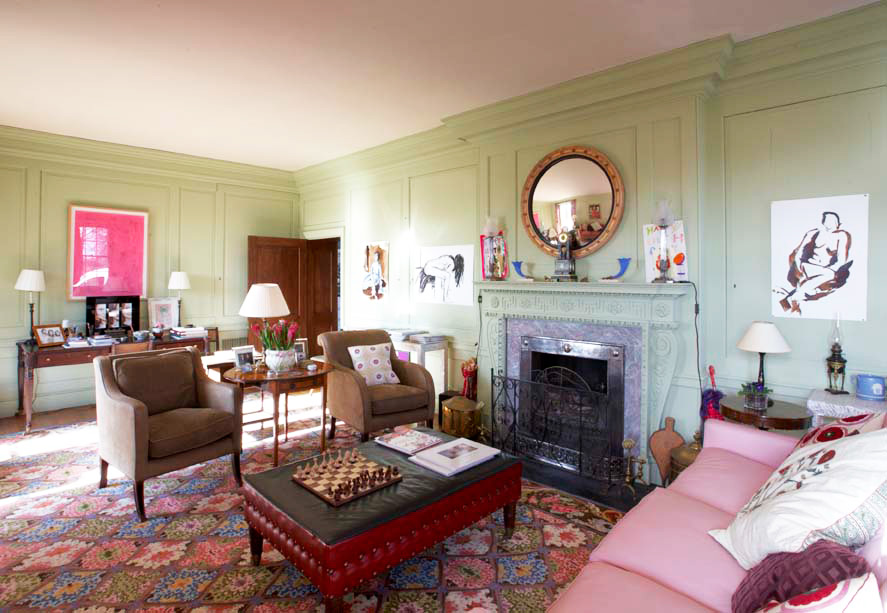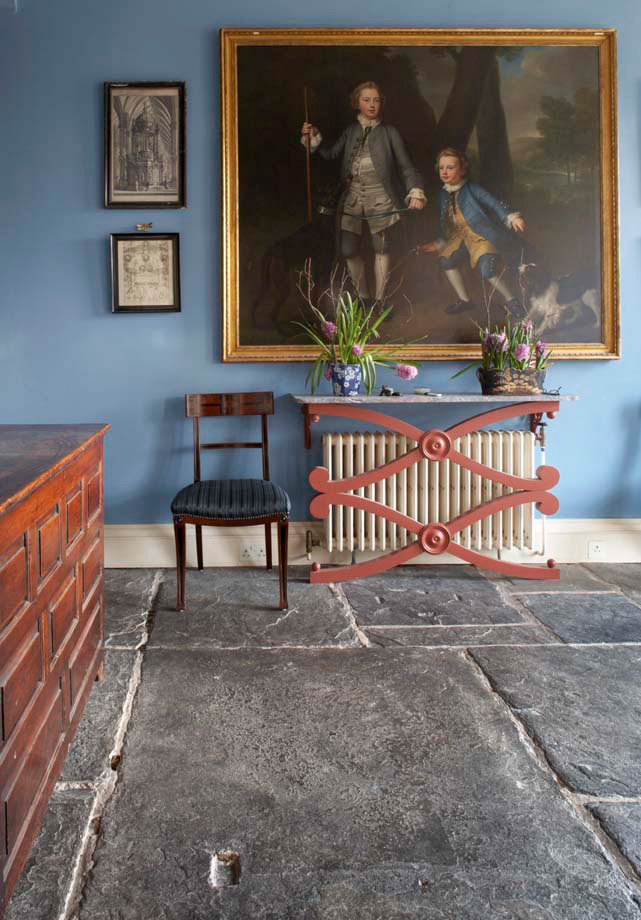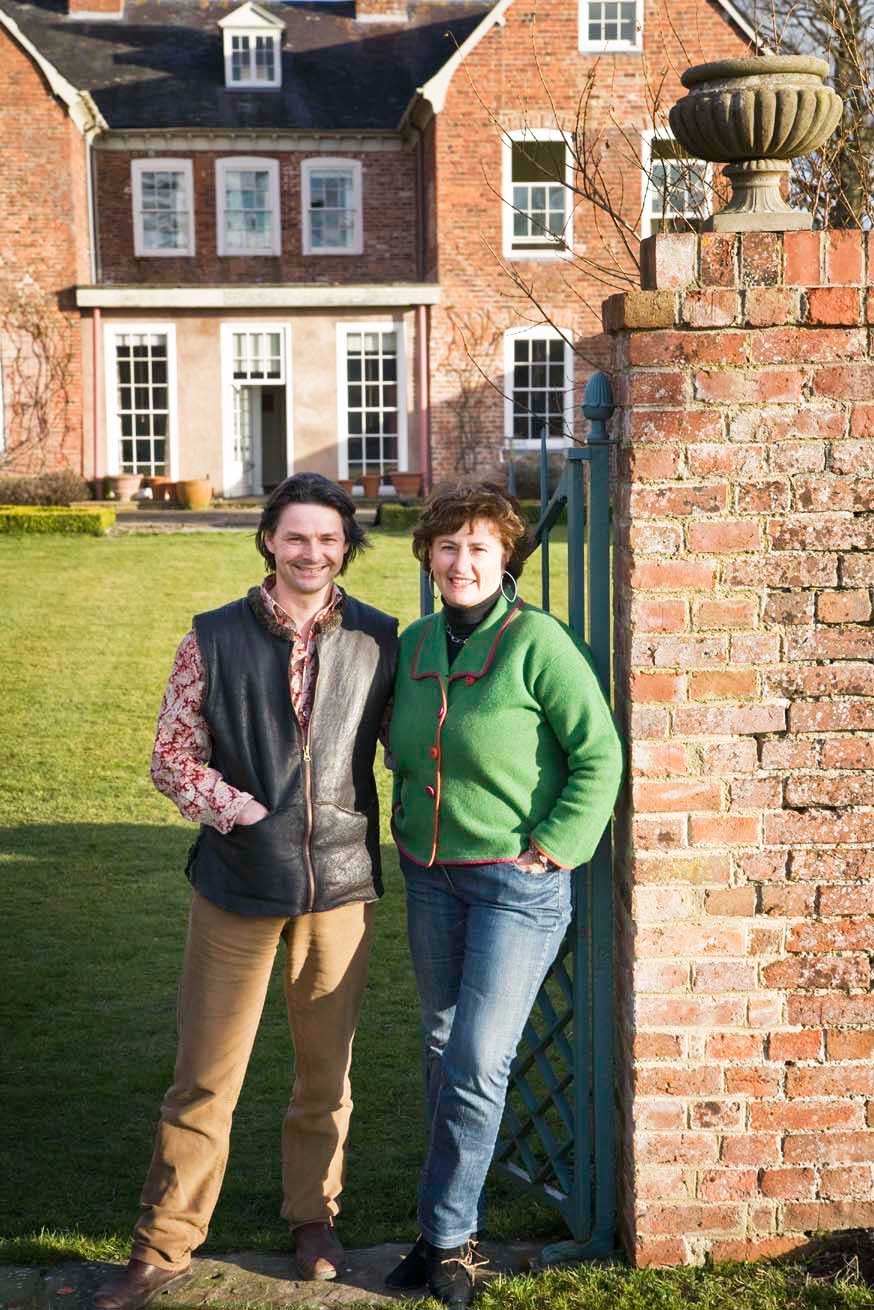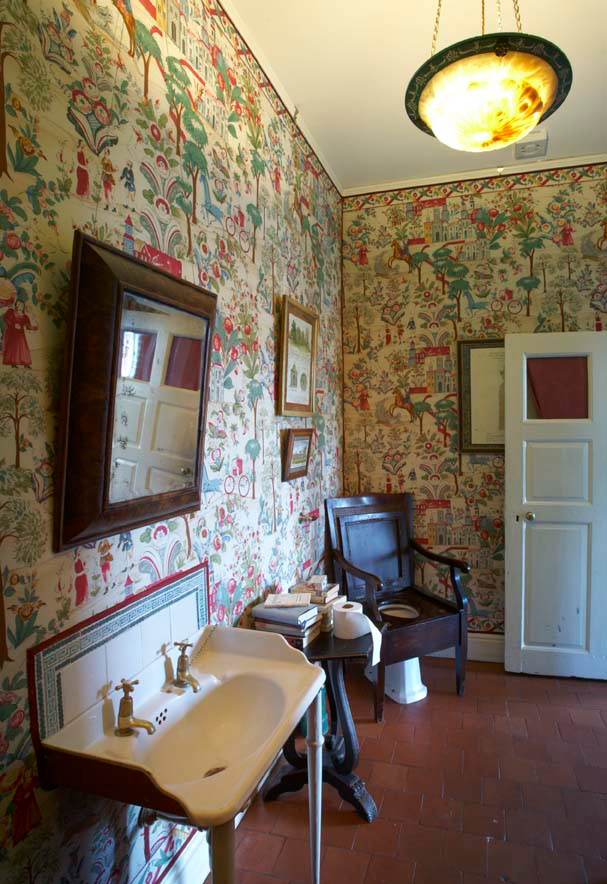A quintessential English country house with impeccable eco-friendly credentials
Edward and Emma Bulmer's splendid Herefordshire home is full of colour and pattern...and boasts surprisingly low running costs

Interior designer, committed environmentalist and founder/owner of the Edward Bulmer brand of natural paints, Edward Bulmer's house has evolved into a warm, characterful home. He and his wife Emma love colour and pattern, but before they got down to the pretty stuff, they put their resources into ensuring the house is energy efficient. And their efforts were rewarded a few years ago when it took second place in the British Institute of Interior Design's Retrofit Awards. Edward Bulmer is included in the prestigious House & Garden Directory of 100 leading interior designers.
The Bulmers' house is undoubtedly fairly grand when it comes to family homes. But the occupants are far from ostentatious indulgers in the high life, rather energy-conservation and being good environmentalists are key tenets of their lifestyle.
So radiators aren't pumping at full pelt all winter, rather the family are zealous self-insulators; and while it is a beautifully decorated English country house, a good deal of its contents are the result of upcycling, recycling and a fair bit of making-do-and-mending, which sit happily among heirlooms and artworks.
This beautifully-proportioned eight-bedroom house, built just before Queen Anne came to the throne in 1702, is part of a Grade II listed estate that the Bulmers bought in the 1990s. It was in a state of 'benign neglect' says Edward Bulmer, and it's been a long labour of love to not only renovate it, but more crucially to eco-friendlify it.
'It's a brick built house. When we bought it it had leaking windows and draughty rooms... In 2004, 10 years and three children later, we asked the Centre for Alternative Technology to come and do a full audit of the house for us. They measured heat loss, energy consumption, the whole lot.'
And so began a period of fairly hefty expenditure on insultation, woodburning stoves, draught-proofing, a biomass boiler, solar panels, and an electric Aga to replace the 1948-installed anthracite Aga. 'This is the boring expensive stuff you have to pay for if you want to go green. But it does pay off,' says Bulmer. 'Now our thermostat is mostly set at 16.5 degrees.'
And parents and children are not forced to huddle by the Aga all winter and retreat to bed at 7pm because of the cold. Far from it, the house is warm despite its low gas and electricity consumption.
'For me, it's important that we live equitably and share resources. Certainly my generation has lived irresponsibly and the huge rise in affluence in the West has led to us consuming resources unequally, and that has got to stop,' says Bulmer. 'Of course collective action is what's needed but we can each only do what we can do.
'So don't think 'what's the point' in you turning off the lights when you leave a room on the grounds that it makes no difference in the great scheme of things. Each of us can only be responsible for ourselves and there's a lot we can all do to consume less energy.'
He adds that while he's not a proselytizer for green living, his does see it as part of his job to advise clients on issues such as reducing energy consumption, buying ethically-made products, and to share the knowledge he's acquired over the years. 'Interior designers can be make-up artists or well-being advisers. I prefer to be the latter. But it's not a question of trying to force anyone's hand. People know what they want, but most of us are open to taking advice.'
As to the interior decoration of their own house, he and Emma have not wanted an immaculate period showpiece, rather it's a family home and rooms have that delightful English country house eclecticism. 'As you can see, we are not afraid of pattern and we like bright colours..,' says Bulmer. Forget a restrained world of taupe, rooms in the Bulmer house are painted in pinks, blues and greens (using Edward Bulmer Natural Paints of course), while others have vibrant wallpapers.
Floors are oak planks, from oak felled on the estate, with some stone, such as the flags in the hallway. Original features have been kept, while the house is full of paintings, antiques and pieces acquired over the years from predominantly local sources.
For rugs and carpets, the Bulmers turn to Powys-based expert David Bamford, who restores carpets, and designs and weaves new ones. 'We would like everything we use to be made in Herefordshire, ideally!,' laughs Bulmer. But alas when it comes to rugs, that's not possible, so he prefers to have them made in the EU, and buys from David Bamford. His rugs are manufactured in southern Bulgaria, and the workshops here use local raw wools, while manufacturing techniques are largely unchanged over hundreds of years, such as having wood-fired vegetable dye vats that have no impact on the local environment.
'David's carpets are wonderful, I particularly like the undyed herringbones from his collections. Generally, I prefer to buy products made in the EU because you know the factories have to meet EU standards. People's pay and working conditions are very important,' says Bulmer.
For fabrics, the Bulmers prefer linens because linen is inherently eco-friendly, not requiring much water or chemical fertilisers to make it grow, and organic cottons. Heavier fabrics can't always be made from these yarns and companies Bulmer looks to include Watts of Westminster, Lelievre, Claremont and Turnell & Gigon.
His advice on bathrooms is not to treat them as a fashion item, 'but make them into a proper room'. So if you have the luxury of a large space, don't be afraid to introduce furniture and fabric.
On the whole, the Edward Bulmer approach to interior design and decoration is to firstly to ensure your home conserves energy. Then use products that are natural, environmentally-friendly and ethically-made, and consider having items made by craftspeople in your area, since the UK has many highly skilled cabinet makers, potters, stonemasons and metalworkers. And don't forget buying antiques can be both recycling and upcycling in action.










